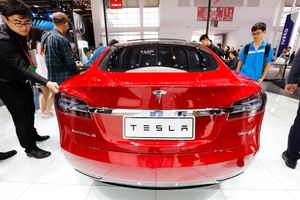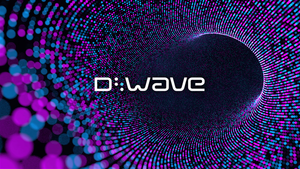
In a pivotal moment for the global semiconductor industry, ASML Holding N.V. (AMS: ASML), the Dutch giant indispensable to advanced chip manufacturing, has articulated a robust long-term outlook driven by the insatiable demand for AI-fueled chips. This unwavering confidence comes despite the company bracing for a significant downturn in its Chinese market sales in 2026, a clear signal that the burgeoning artificial intelligence sector is not just a trend but the new bedrock of semiconductor growth. The announcement, coinciding with its Q3 2025 earnings report on October 15, 2025, underscores a profound strategic realignment within the industry, shifting its primary growth engine from traditional electronics to the cutting-edge requirements of AI.
This strategic pivot by ASML, the sole producer of Extreme Ultraviolet (EUV) lithography systems essential for manufacturing the most advanced semiconductors, carries immediate and far-reaching implications. It highlights AI as the dominant force reshaping global semiconductor revenue, expected to outpace traditional sectors like automotive and consumer electronics. For an industry grappling with geopolitical tensions and volatile market conditions, ASML's bullish stance on AI offers a beacon of stability and a clear direction forward, emphasizing the critical role of advanced chip technology in powering the next generation of intelligent systems.
The AI Imperative: A Deep Dive into ASML's Strategic Outlook
ASML's recent pronouncements paint a vivid picture of a semiconductor landscape increasingly defined by the demands of artificial intelligence. CEO Christophe Fouquet has consistently championed AI as the "tremendous opportunity" propelling the industry, asserting that advanced AI chips are inextricably linked to the capabilities of ASML's sophisticated lithography machines, particularly its groundbreaking EUV systems. The company projects that the servers, storage, and data centers segment, heavily influenced by AI growth, will constitute approximately 40% of total semiconductor demand by 2030, a dramatic increase from 2022 figures. This vision is encapsulated in Fouquet's statement: "We see our society going from chips everywhere to AI chips everywhere," signaling a fundamental reorientation of technological priorities.
The financial performance of ASML (AMS: ASML) in Q3 2025 further validates this AI-centric perspective, with net sales reaching €7.5 billion and net income of €2.1 billion, alongside net bookings of €5.4 billion that surpassed market expectations. This robust performance is attributed to the surge in AI-related investments, extending beyond initial customers to encompass leading-edge logic and advanced DRAM manufacturers. While mainstream markets like PCs and smartphones experience a slower recovery, the powerful undertow of AI demand is effectively offsetting these headwinds, ensuring sustained overall growth for ASML and, by extension, the entire advanced semiconductor ecosystem.
However, this optimism is tempered by a stark reality: ASML anticipates a "significant" decline in its Chinese market sales for 2026. This expected downturn is a multifaceted issue, stemming from the resolution of a backlog of orders accumulated during the COVID-19 pandemic and, more critically, the escalating impact of US export restrictions and broader geopolitical tensions. While ASML's most advanced EUV systems have long been restricted from sale to Mainland China, the demand for its Deep Ultraviolet (DUV) systems from the region had previously surged, at one point accounting for nearly 50% of ASML's total sales in 2024. This elevated level, however, was deemed an anomaly, with "normal business" in China typically hovering around 20-25% of revenue. Fouquet has openly expressed concerns that the US-led campaign to restrict chip exports to China is increasingly becoming "economically motivated" rather than solely focused on national security, hinting at growing industry unease.
This dual narrative—unbridled confidence in AI juxtaposed with a cautious outlook on China—marks a significant divergence from previous industry cycles where broader economic health dictated semiconductor demand. Unlike past periods where a slump in a major market might signal widespread contraction, ASML's current stance suggests that the specialized, high-performance requirements of AI are creating a distinct and resilient demand channel. This approach differs fundamentally from relying on generalized market recovery, instead betting on the specific, intense processing needs of AI to drive growth, even if it means navigating complex geopolitical headwinds and shifting regional market dynamics. The initial reactions from the AI research community and industry experts largely align with ASML's assessment, recognizing AI's transformative power as a primary driver for advanced silicon, even as they acknowledge the persistent challenges posed by international trade restrictions.
Ripple Effect: How ASML's AI Bet Reshapes the Tech Ecosystem
ASML's (AMS: ASML) unwavering confidence in AI-fueled chip demand, even amidst a projected slump in the Chinese market, is poised to profoundly reshape the competitive landscape for AI companies, tech giants, and burgeoning startups. This strategic pivot concentrates benefits among a select group of players, intensifies competition in critical areas, and introduces both potential disruptions and new avenues for market positioning across the global tech ecosystem. The Dutch lithography powerhouse, holding a near-monopoly on EUV technology, effectively becomes the gatekeeper to advanced AI capabilities, making its outlook a critical barometer for the entire industry.
The primary beneficiaries of this AI-driven surge are, naturally, ASML itself and the leading chip manufacturers that rely on its cutting-edge equipment. Companies such as Taiwan Semiconductor Manufacturing Company (TSMC: TPE), Samsung Electronics Co., Ltd. (KRX: 005930), Intel Corporation (NASDAQ: INTC), SK Hynix Inc. (KRX: 000660), and Micron Technology, Inc. (NASDAQ: MU) are heavily investing in expanding their capacity to produce advanced AI chips. TSMC, in particular, stands to gain significantly as the manufacturing partner for dominant AI accelerator designers like NVIDIA Corporation (NASDAQ: NVDA). These foundries and integrated device manufacturers will be ASML's cornerstone customers, driving demand for its advanced lithography tools.
Beyond the chipmakers, AI chip designers like NVIDIA (NASDAQ: NVDA), which currently dominates the AI accelerator market, and Advanced Micro Devices, Inc. (NASDAQ: AMD), a significant and growing player, are direct beneficiaries of the exploding demand for specialized AI processors. Furthermore, hyperscalers and tech giants such as Meta Platforms, Inc. (NASDAQ: META), Oracle Corporation (NYSE: ORCL), Microsoft Corporation (NASDAQ: MSFT), Alphabet Inc. (NASDAQ: GOOGL), Tesla, Inc. (NASDAQ: TSLA), and OpenAI are investing billions in building vast data centers to power their advanced AI systems. Their insatiable need for computational power directly translates into a surging demand for the most advanced chips, thus reinforcing ASML's strategic importance. Even AI startups, provided they secure strategic partnerships, can benefit; OpenAI's multi-billion-dollar chip deals with AMD, Samsung, and SK Hynix for projects like 'Stargate' exemplify this trend, ensuring access to essential hardware. ASML's own investment in French AI startup Mistral AI also signals a proactive approach to supporting emerging AI ecosystems.
However, this concentrated growth also intensifies competition. Major OEMs and large tech companies are increasingly exploring custom chip designs to reduce their reliance on external suppliers like NVIDIA, fostering a more diversified, albeit fiercely competitive, market for AI-specific processors. This creates a bifurcated industry where the economic benefits of the AI boom are largely concentrated among a limited number of top-tier suppliers and distributors, potentially marginalizing smaller or less specialized firms. The AI chip supply chain has also become a critical battleground in the U.S.-China technology rivalry. Export controls by the U.S. and Dutch governments on advanced chip technology, coupled with China's retaliatory restrictions on rare earth elements, create a volatile and strategically vulnerable environment, forcing companies to navigate complex geopolitical risks and re-evaluate global supply chain resilience. This dynamic could lead to significant shipment delays and increased component costs, posing a tangible disruption to the rapid expansion of AI infrastructure.
The Broader Canvas: ASML's AI Vision in the Global Tech Tapestry
ASML's (AMS: ASML) steadfast confidence in AI-fueled chip demand, even as it navigates a challenging Chinese market, is not merely a corporate announcement; it's a profound statement on the broader AI landscape and global technological trajectory. This stance underscores a fundamental shift in the engine of technological progress, firmly establishing advanced AI semiconductors as the linchpin of future innovation and economic growth. It reflects an unparalleled and sustained demand for sophisticated computing power, positioning ASML as an indispensable enabler of the next era of intelligent systems.
This strategic direction fits seamlessly into the overarching trend of AI becoming the primary application driving global semiconductor revenue in 2025, now surpassing traditional sectors like automotive. The exponential growth of large language models, cloud AI, edge AI, and the relentless expansion of data centers all necessitate the highly sophisticated chips that only ASML's lithography can produce. This current AI boom is often described as a "seismic shift," fundamentally altering humanity's interaction with machines, propelled by breakthroughs in deep learning, neural networks, and the ever-increasing availability of computational power and data. The global semiconductor industry, projected to reach an astounding $1 trillion in revenue by 2030, views AI semiconductors as the paramount accelerator for this ambitious growth.
The impacts of this development are multi-faceted. Economically, ASML's robust forecasts – including a 15% increase in total net sales for 2025 and anticipated annual revenues between €44 billion and €60 billion by 2030 – signal significant revenue growth for the company and the broader semiconductor industry, driving innovation and capital expenditure. Technologically, ASML's Extreme Ultraviolet (EUV) and High-NA EUV lithography machines are indispensable for manufacturing chips at 5nm, 3nm, and soon 2nm nodes and beyond. These advancements enable smaller, more powerful, and energy-efficient semiconductors, crucial for enhancing AI processing speed and efficiency, thereby extending the longevity of Moore's Law and facilitating complex chip designs. Geopolitically, ASML's indispensable role places it squarely at the center of global tensions, particularly the U.S.-China tech rivalry. Export restrictions on ASML's advanced systems to China, aimed at curbing technological advancement, highlight the strategic importance of semiconductor technology for national security and economic competitiveness, further fueling China's domestic semiconductor investments.
However, this transformative period is not without its concerns. Geopolitical volatility, driven by ongoing trade tensions and export controls, introduces significant uncertainty for ASML and the entire global supply chain, with potential disruptions from rare earth restrictions adding another layer of complexity. There are also perennial concerns about market cyclicality and potential oversupply, as the semiconductor industry has historically experienced boom-and-bust cycles. While AI demand is robust, some analysts note that chip usage at production facilities remains below full capacity, and the fervent enthusiasm around AI has revived fears of an "AI bubble" reminiscent of the dot-com era. Furthermore, the massive expansion of AI data centers raises significant environmental concerns regarding energy consumption, with companies like OpenAI facing substantial operational costs for their energy-intensive AI infrastructures.
When compared to previous technological revolutions, the current AI boom stands out. Unlike the Industrial Revolution's mechanization, the Internet's connectivity, or the Mobile Revolution's individual empowerment, AI is about "intelligence amplified," extending human cognitive abilities and automating complex tasks at an unparalleled speed. While parallels to the dot-com boom exist, particularly in terms of rapid growth and speculative investments, a key distinction often highlighted is that today's leading AI companies, unlike many dot-com startups, demonstrate strong profitability and clear business models driven by actual AI projects. Nevertheless, the risk of overvaluation and market saturation remains a pertinent concern as the AI industry continues its rapid, unprecedented expansion.
The Road Ahead: Navigating the AI-Driven Semiconductor Future
ASML's (AMS: ASML) pronounced confidence in AI-fueled chip demand lays out a clear trajectory for the semiconductor industry, outlining a future where artificial intelligence is not just a growth driver but the fundamental force shaping technological advancement. This optimism, carefully balanced against geopolitical complexities, points towards significant near-term and long-term developments, propelled by an ever-expanding array of AI applications and a continuous push against the boundaries of chip manufacturing.
In the near term (2025-2026), ASML anticipates continued robust performance. The company reported better-than-expected orders of €5.4 billion in Q3 2025, with a substantial €3.6 billion specifically for its high-end EUV machines, signaling a strong rebound in customer demand. Crucially, ASML has reversed its earlier cautious stance on 2026 revenue growth, now expecting net sales to be at least flat with 2025 levels, largely due to sustained AI market expansion. For Q4 2025, ASML anticipates strong sales between €9.2 billion and €9.8 billion, with a full-year 2025 sales growth of approximately 15%. Technologically, ASML is making significant strides with its Low NA (0.33) and High NA EUV technologies, with initial High NA systems already being recognized in revenue, and has introduced its first product for advanced packaging, the TWINSCAN XT:260, promising increased productivity.
Looking further out towards 2030, ASML's vision is even more ambitious. The company forecasts annual revenue between approximately €44 billion and €60 billion, a substantial leap from its 2024 figures, underpinned by a robust gross margin. It firmly believes that AI will propel global semiconductor sales to over $1 trillion by 2030, marking an annual market growth rate of about 9% between 2025 and 2030. This growth will be particularly evident in EUV lithography spending, which ASML expects to see a double-digit compound annual growth rate (CAGR) in AI-related segments for both advanced Logic and DRAM. The continued cost-effective scalability of EUV technology will enable customers to transition more multi-patterning layers to single-patterning EUV, further enhancing efficiency and performance.
The potential applications fueling this insatiable demand are vast and diverse. AI accelerators and data centers, requiring immense computing power, will continue to drive significant investments in specialized AI chips. This extends to advanced logic chips for smartphones and AI data centers, as well as high-bandwidth memory (HBM) and other advanced DRAM. Beyond traditional chips, ASML is also supporting customers in 3D integration and advanced packaging with new products, catering to the evolving needs of complex AI architectures. ASML CEO Christophe Fouquet highlights that the positive momentum from AI investments is now extending to a broader range of customers, indicating widespread adoption across various industries.
Despite the strong tailwinds from AI, significant challenges persist. Geopolitical tensions and export controls, particularly regarding China, remain a primary concern, as ASML expects Chinese customer demand and sales to "decline significantly" in 2026. While ASML's CFO, Roger Dassen, frames this as a "normalization," the political landscape remains volatile. The sheer demand for ASML's sophisticated machines, costing around $300 million each with lengthy delivery times, can strain supply chains and production capacity. While AI demand is robust, macroeconomic factors and weaker demand from other industries like automotive and consumer electronics could still introduce volatility. Experts are largely optimistic, raising price targets for ASML and focusing on its growth potential post-2026, but also caution about the company's high valuation and potential short-term volatility due to geopolitical factors and the semiconductor industry's cyclical nature.
Conclusion: Navigating the AI-Driven Semiconductor Future
ASML's (AMS: ASML) recent statements regarding its confidence in AI-fueled chip demand, juxtaposed against an anticipated slump in the Chinese market, represent a defining moment for the semiconductor industry and the broader AI landscape. The key takeaway is clear: AI is no longer merely a significant growth sector; it is the fundamental economic engine driving the demand for the most advanced chips, providing a powerful counterweight to regional market fluctuations and geopolitical headwinds. This robust, sustained demand for cutting-edge semiconductors, particularly ASML's indispensable EUV lithography systems, underscores a pivotal shift in global technological priorities.
This development holds profound significance in the annals of AI history. ASML, as the sole producer of advanced EUV lithography machines, effectively acts as the "picks and shovels" provider for the AI "gold rush." Its technology is the bedrock upon which the most powerful AI accelerators from companies like NVIDIA Corporation (NASDAQ: NVDA), Apple Inc. (NASDAQ: AAPL), Intel Corporation (NASDAQ: INTC), and Samsung Electronics Co., Ltd. (KRX: 005930) are built. Without ASML, the continuous miniaturization and performance enhancement of AI chips—critical for advancing deep learning, large language models, and complex AI systems—would be severely hampered. The fact that AI has now surpassed traditional sectors to become the primary driver of global semiconductor revenue in 2025 cements its central economic importance and ASML's irreplaceable role in enabling this revolution.
The long-term impact of ASML's strategic position and the AI-driven demand is expected to be transformative. ASML's dominance in EUV lithography, coupled with its ambitious roadmap for High-NA EUV, solidifies its indispensable role in extending Moore's Law and enabling the relentless miniaturization of chips. The company's projected annual revenue targets of €44 billion to €60 billion by 2030, supported by strong gross margins, indicate a sustained period of growth directly correlated with the exponential expansion and evolution of AI technologies. Furthermore, the ongoing geopolitical tensions, particularly with China, underscore the strategic importance of semiconductor manufacturing capabilities and ASML's technology for national security and technological leadership, likely encouraging further global investments in domestic chip manufacturing capacities, which will ultimately benefit ASML as the primary equipment supplier.
In the coming weeks and months, several key indicators will warrant close observation. Investors will eagerly await ASML's clearer guidance for its 2026 outlook in January, which will provide crucial details on how the company plans to offset the anticipated decline in China sales with growth from other AI-fueled segments. Monitoring geographical demand shifts, particularly the accelerating orders from regions outside China, will be critical. Further geopolitical developments, including any new tariffs or export controls, could impact ASML's Deep Ultraviolet (DUV) lithography sales to China, which currently remain a revenue source. Finally, updates on the adoption and ramp-up of ASML's next-generation High-NA EUV systems, as well as the progression of customer partnerships for AI infrastructure and chip development, will offer insights into the sustained vitality of AI demand and ASML's continued indispensable role at the heart of the AI revolution.
This content is intended for informational purposes only and represents analysis of current AI developments.
TokenRing AI delivers enterprise-grade solutions for multi-agent AI workflow orchestration, AI-powered development tools, and seamless remote collaboration platforms.
For more information, visit https://www.tokenring.ai/.





